Learn how to blind-bake a pie crust! Many sweet and savory recipes call for partial (par-baking) or fully blind baking pie crust before adding a filling. Let this easy step-by-step tutorial be your guide.
Looking for more helpful baking tips? Check out my step-by-step on how to make a no-bake crust in a springform pan.
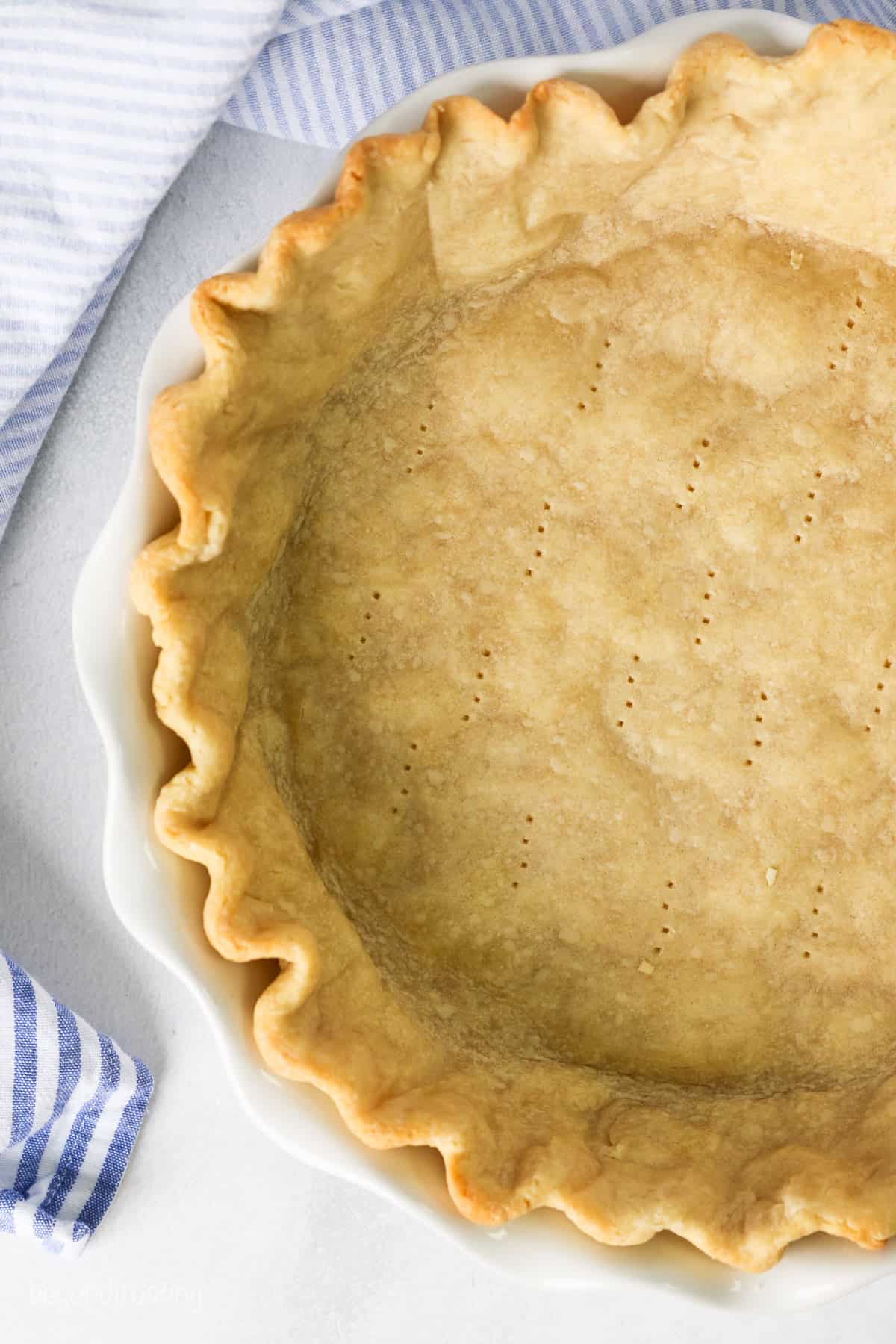
How to Blind-Bake a Pie Crust Like a Pro
Chances are, you’ve come across a pie recipe that includes a step for “blind baking” the pie crust. Also called par-baking, this technique is super useful, and found in recipes for cream pie, lemon meringue pie, pumpkin pie, and more. And don’t worry, if making pies from scratch seems intimidating, you’ve found the right place. It’s very simple once you get the hang of the basics! Starting with blind baking a pie crust. If you’ve never blind-baked a crust before, this tutorial will walk you through all the details.
Why Blind Bake a Pie Crust?
- No-bake fillings. Recipes like chocolate cream pie, and custard pies have fillings that don’t require baking but still call for a fully baked pie shell.
- Evenly baked pies. Certain baked recipes, like quiche, call for partially baking the pie crust before adding a filling, to ensure that the finished pie crust isn’t undercooked.
- Crispy crust. Desserts with runny fillings that set quickly in the oven, like pumpkin pie, call for a headstart on the crust. Once filled and fully baked, the crust stays browned and crisp, and not soggy.
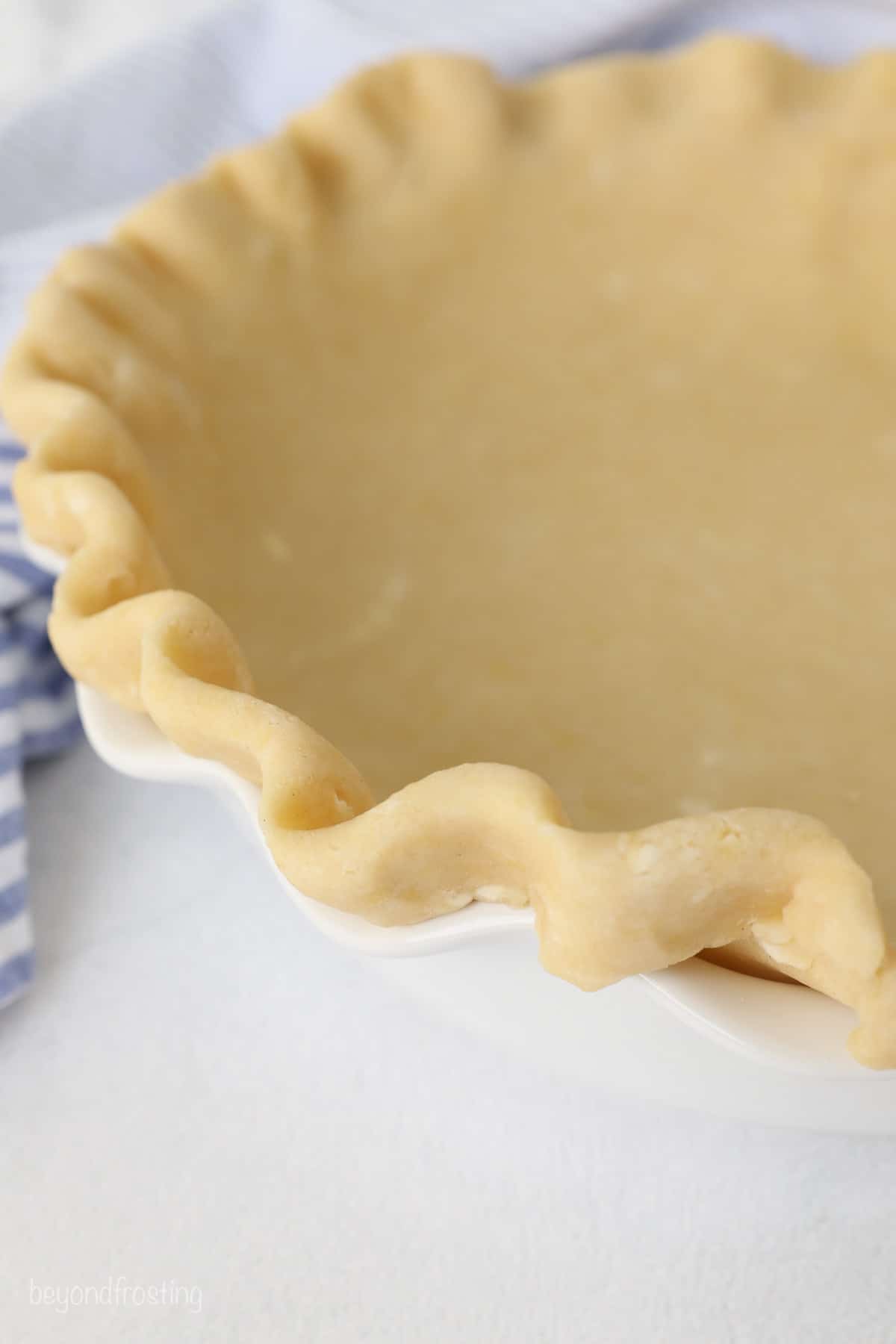
Fully Blind Baked vs. Partially Baked
You can blind-bake a crust fully or partially, depending on the recipe. The process doesn’t change, it’s only the baking times that are different. You can see the difference between a fully blind baked crust and a partially blind baked crust later in the post, but here’s a quick overview of the differences:
- Fully Blind Baked Pie Crust – Required if you’re making a no-bake pie, like German chocolate pie or coconut cream pie, where you still need a baked pie crust. A fully baked crust will take longer to blind bake than a partially cooked crust.
- Partially Blind Baked Pie Crust – Used in recipes where the pie crust needs longer to bake than the filling, like this coconut custard pie or broccoli cheddar quiche. You can also par-bake a pie shell for classic apple pie if you prefer an extra crispy crust.
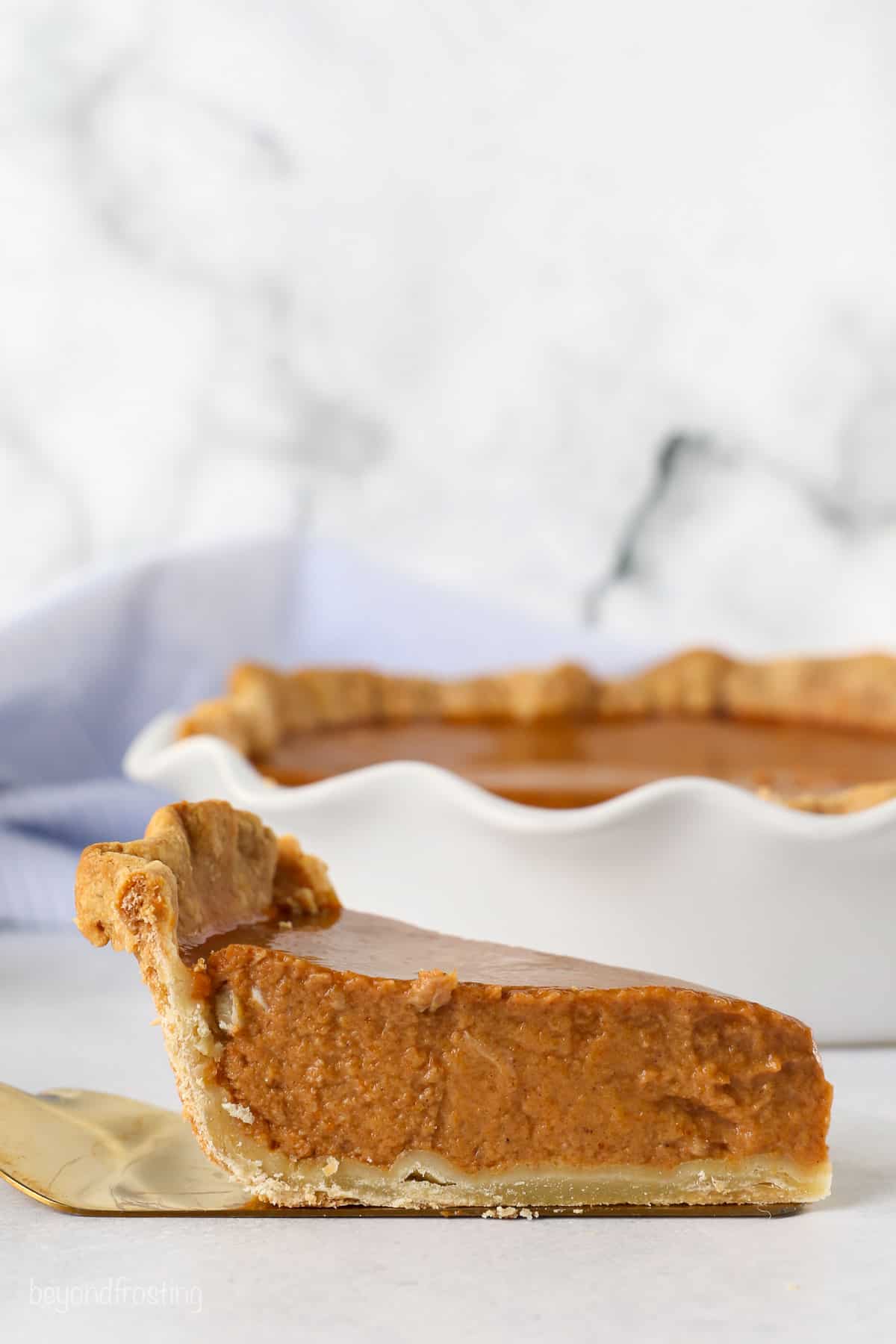
What You’ll Need
Before we dive into the tutorial, here are some notes on what you’ll need to blind-bake a pie crust. I’ve included detailed instructions in the recipe card below the post.
- Pie Crust Dough – You’ll need prepared pie crust dough to fill a 9” pie plate. You can also use a gluten-free pie crust.
- Pie Weights – These can be purchased from your local baking supply store, or you can use some easy alternatives found in your pantry! See below for details.
- Flour – For flouring the surface you’ll use to roll out the dough.
What Happens if You Blind-Bake Without Weights?
The main issue that arises (literally) when blind baking a pie crust is that the moisture in the dough creates steam, which puffs up the crust as it bakes. When there’s no filling to weigh the dough down, you end up with a pie crust that’s puffed in the center, and shrunken at the edges. See the photo below.
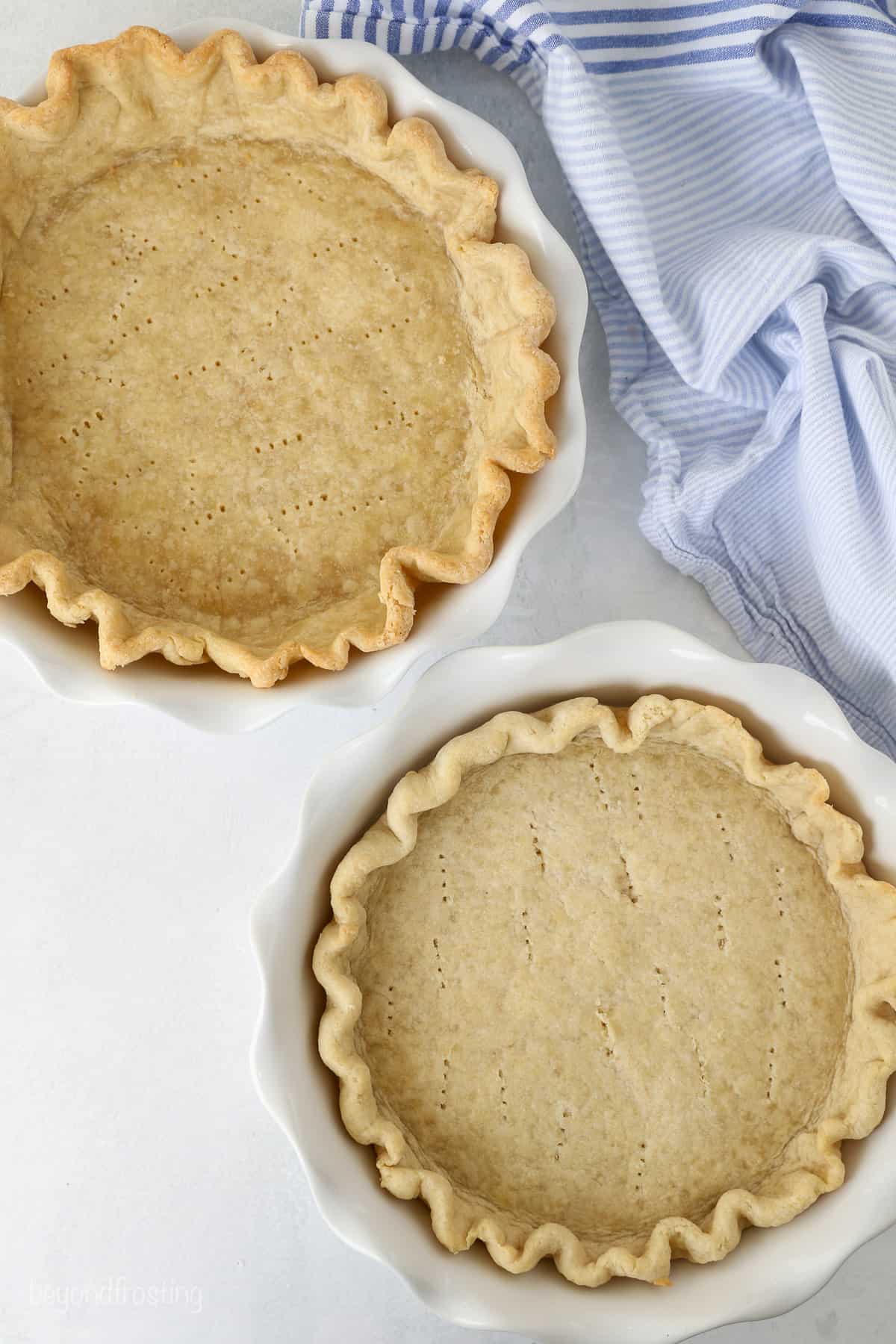
The answer? Weigh down the dough. To do so, line your prepared pie crust with parchment paper, and then add some weight. This can be in the form of pie weights, which are designed specifically for this purpose (see below for more!). Or, you can improvise and weigh down the crust with common kitchen items: beans, rice, even pennies or sugar.
These handy pie weights can be used when blind baking a crust to help the pie maintain it’s shape while par-baking. These are natural food-safe ceramic stoneware and heat safe up to 480 F.
How to Blind-Bake Pie Crust
Baking a pie crust isn’t anything complicated, but getting the blind bake right is key to a successful pie recipe. So, it takes a teensy bit more effort than simply popping your prepared pie dough into the oven. You’ll start with a first bake, with pie weights:
- Prepare the dough. Start by preparing and rolling out your pie crust, and fitting the dough into a 9” pie plate. Tuck the edges under, then crimp. Afterward, place the pie crust into the fridge to chill for 30 minutes.
- Add pie weights. Cover the crust with a sheet of parchment paper, and add your weights. Fill it about ¾ of the way full and make sure that the weights are in an even layer, right up to the edges.
- Bake. Bake the crust with the pie weights at 375ºF for 15 minutes.
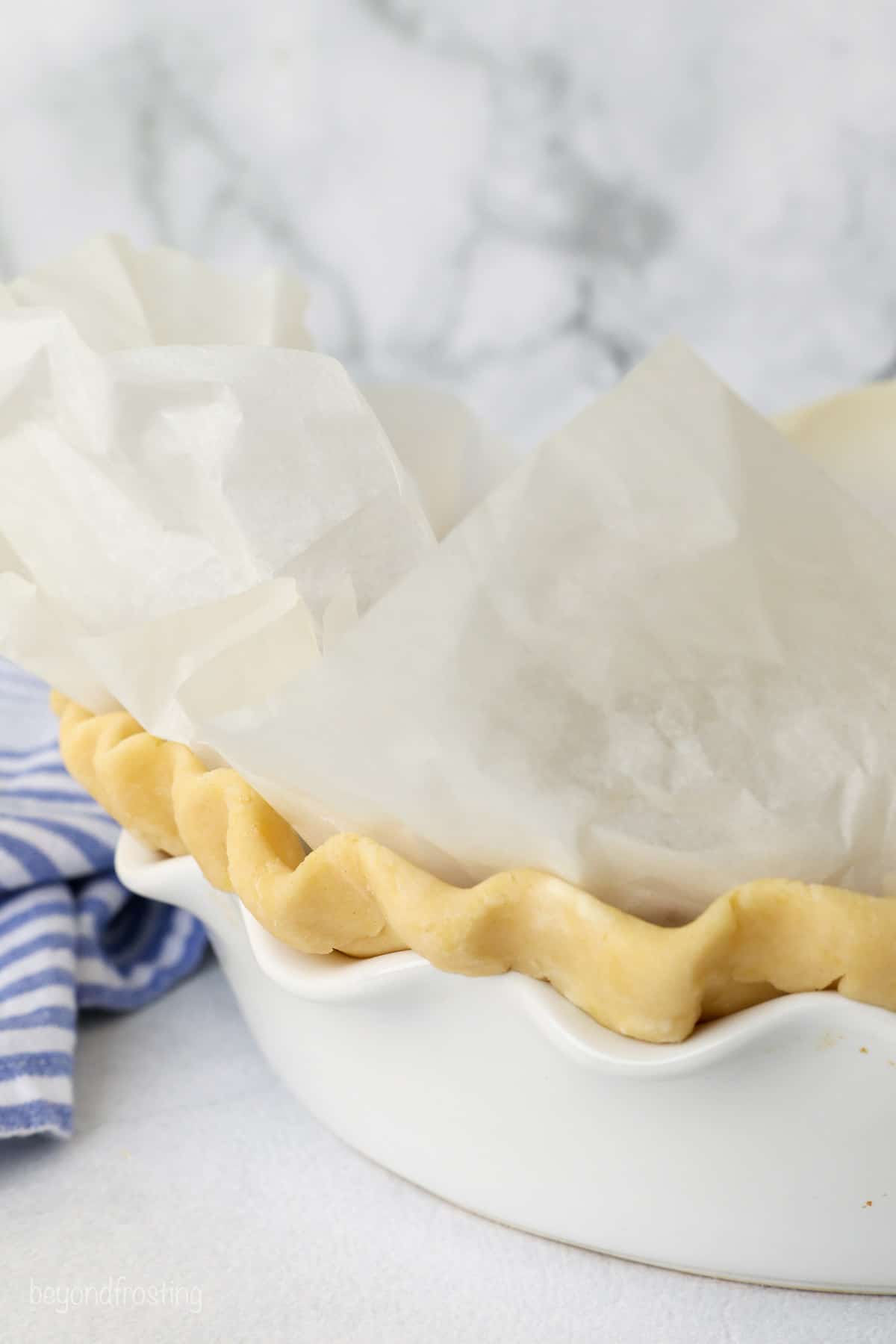
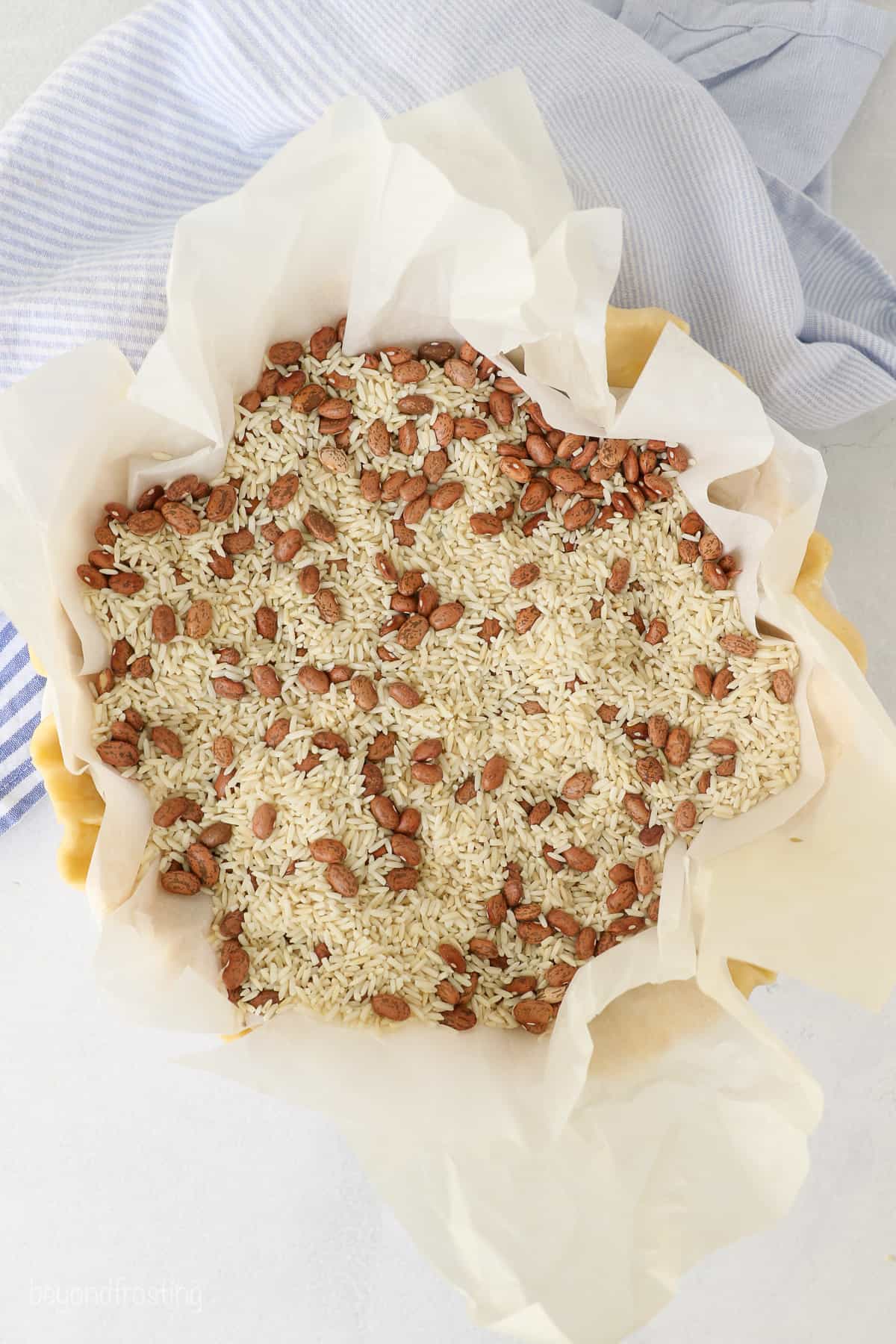
Docking a Pie Crust
When your crust is golden at the edges, take it out and carefully remove the parchment paper with the pie weights. Prick the bottom of the crust with a fork. This is called “docking” the crust, and it creates holes for the steam to escape as the bottom bakes. At this point, your crust is ready to blind bake either partially or fully, see the next section.
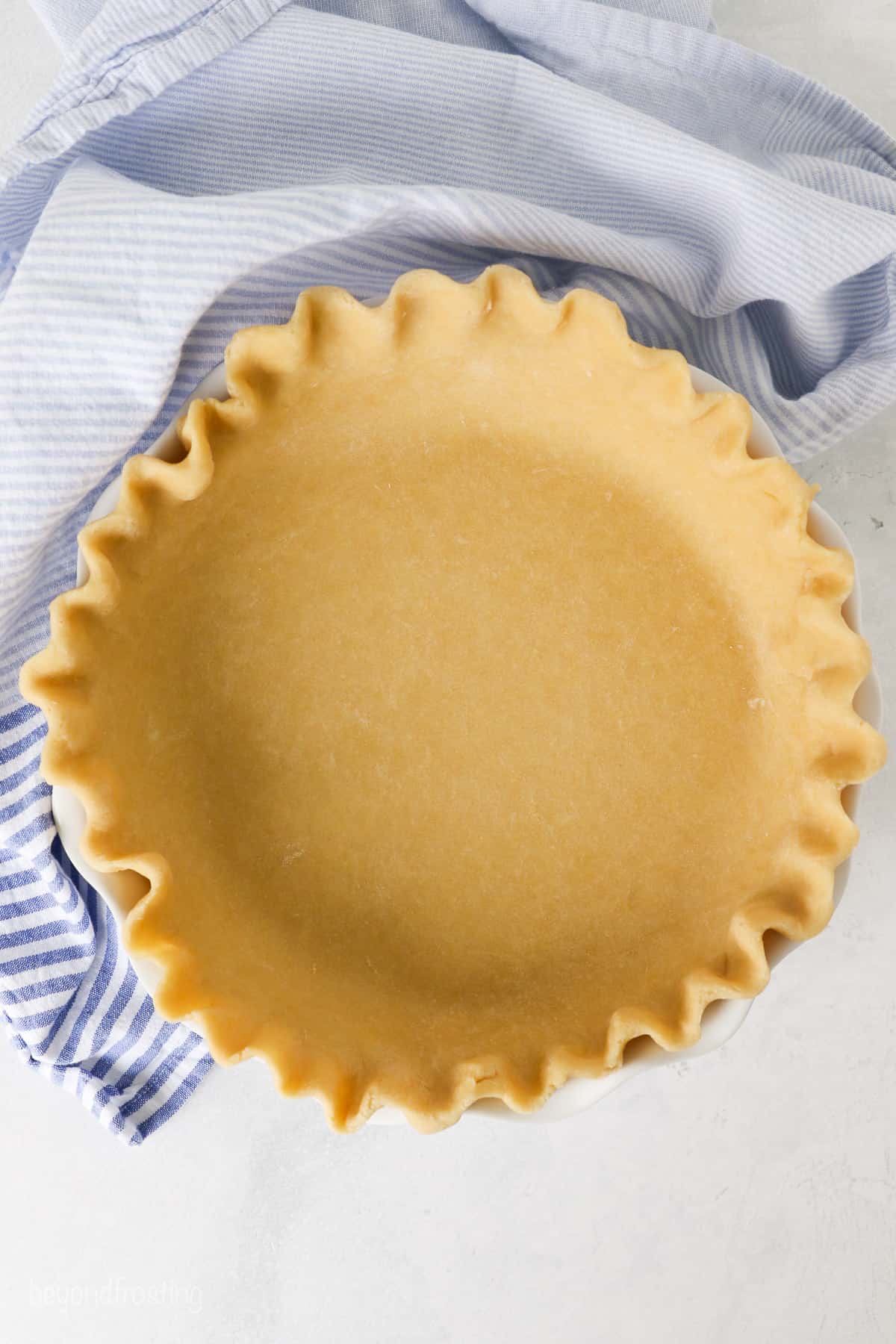
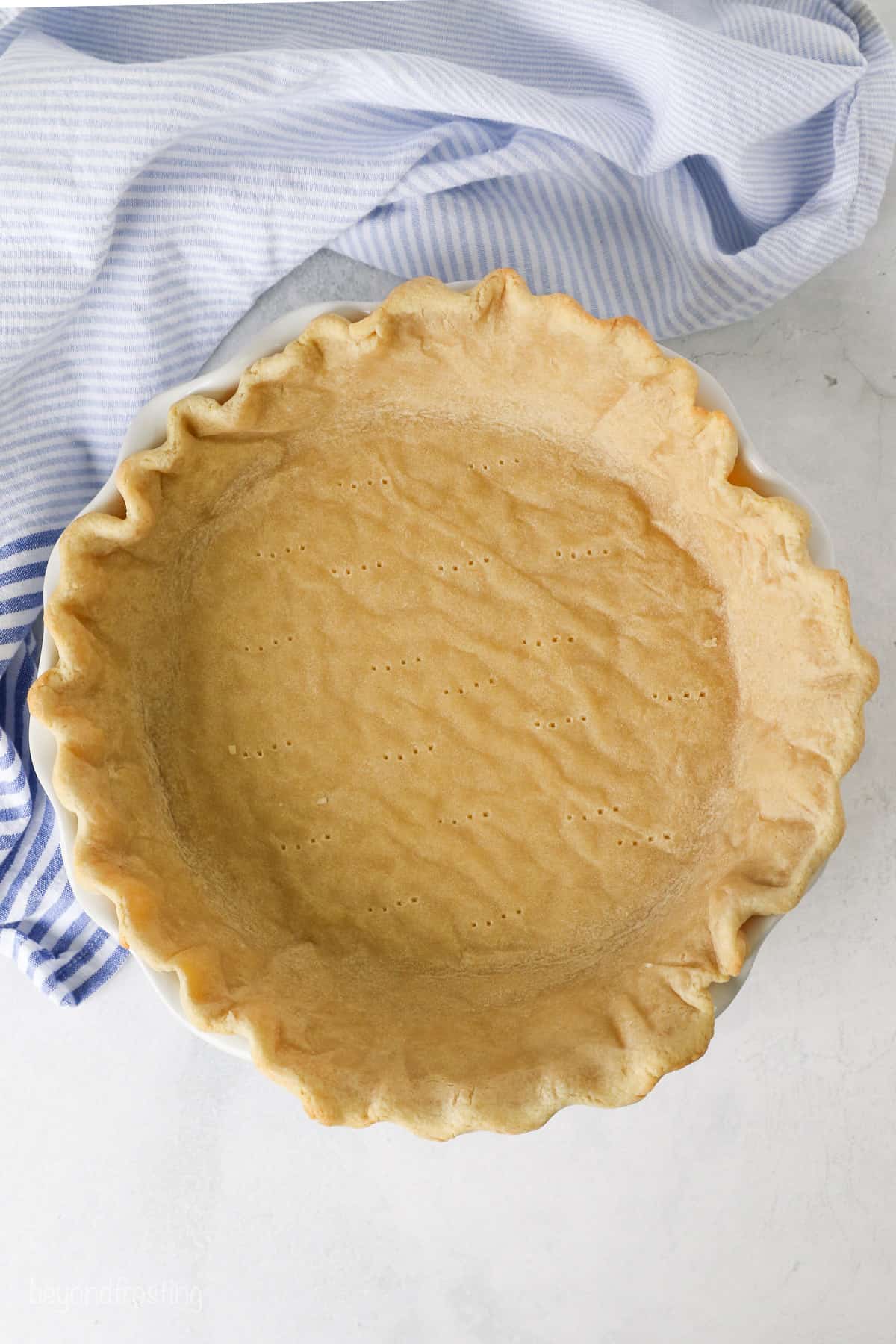
How Long Do You Bake a Pie Crust After Removing the Weights?
The amount of time that your crust blind bakes without the pie weights depends on what your recipe requires:
- Partially bake. For a partially baked pie crust, return the crust to the oven for 7-10 minutes. The bottom should be barely browned, as you’ll return the pie to the oven with a filling.
- Fully bake. For a fully baked crust, bake for an additional 15-20 minutes. The bottom and edges of the crust should be 100% cooked through and browned.
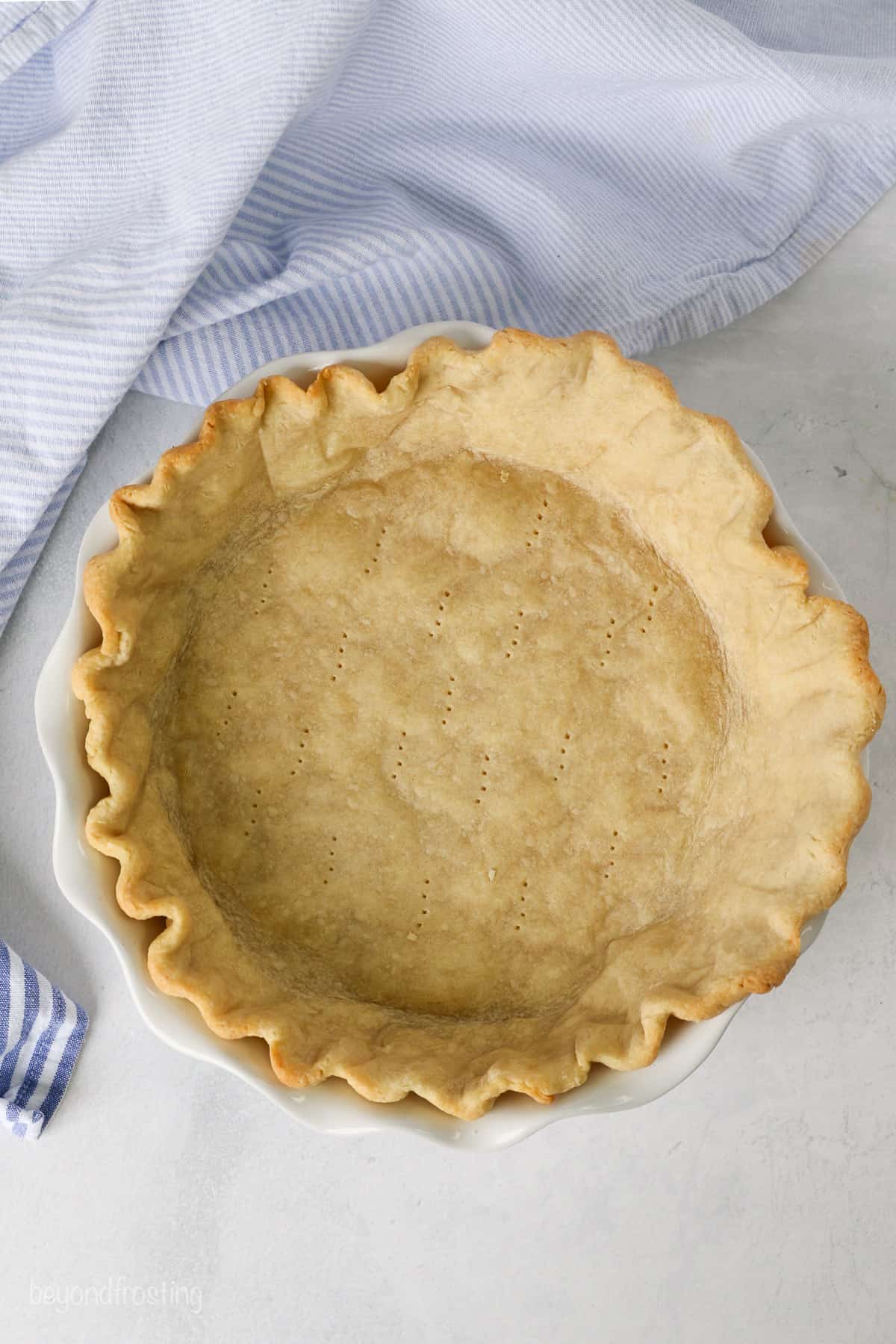
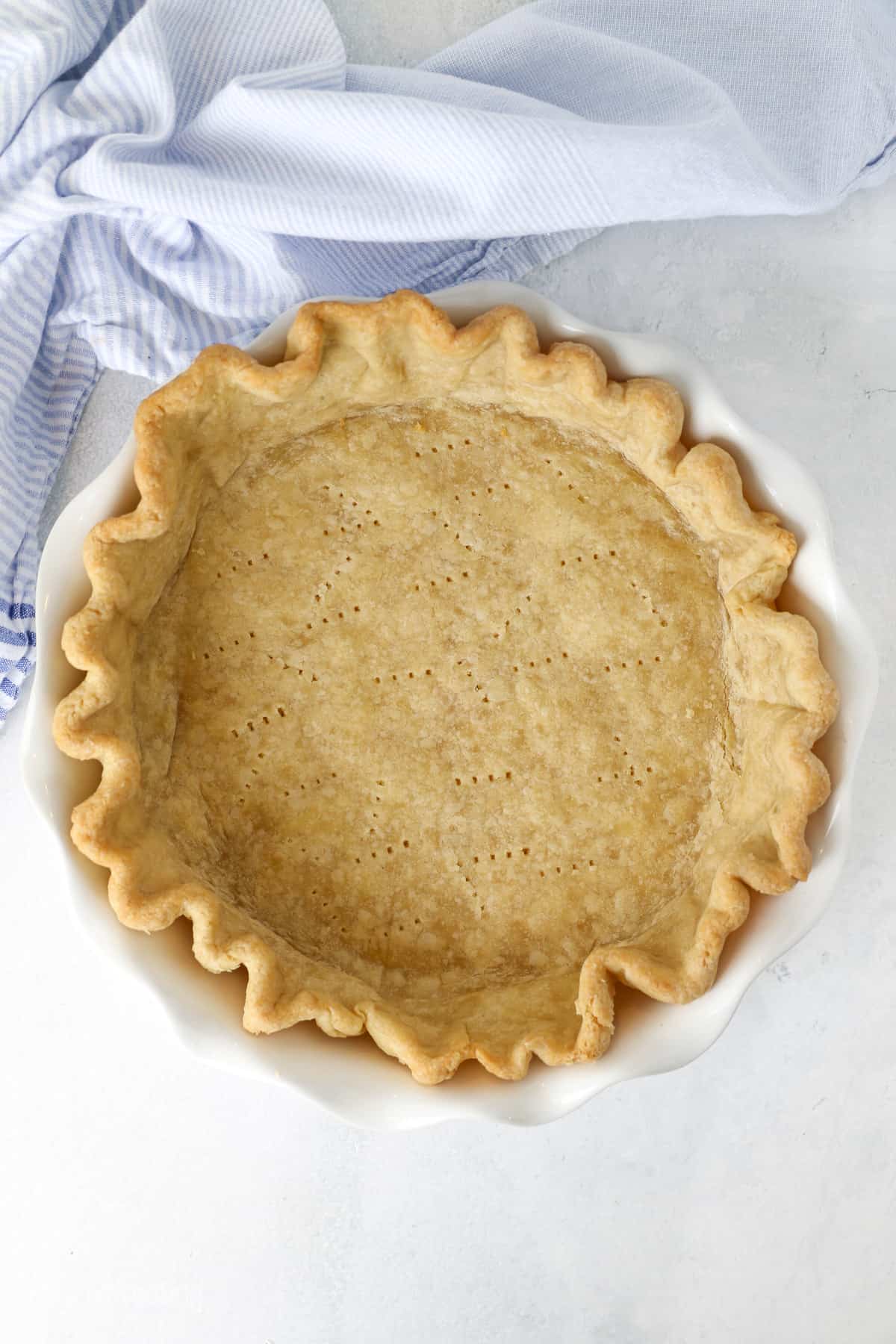
Tips for Blind Baking Pie Crust
Here are some bonus tips for blind baking success:
- Chill the pie dough. Refrigerating the pie dough beforehand helps the crust hold its shape and prevents it from shrinking too much in the oven.
- Roll out the dough to be wider than the pan. If your pie plate is 9”, aim to roll the pie dough out to 11”, so there’s enough of an overhang to fold and crimp the edges. Extra-tall edges also account for shrinkage.
- Always use pie weights. To further prevent shrinking, and to keep the dough from puffing up, make sure that you weigh down the crust when blind baking.
- If you don’t have pie weights, use dried beans, uncooked rice, or a combination. They work just fine and you can save them in an airtight container to re-use when baking future pie crusts.
- Line the crust with parchment paper. This makes the pie weights easy to remove and keeps them from sticking to the dough. Feel free to double-line your crust if needed. You can also blind bake a crust with aluminum foil instead.
- Use a pie shield. Due to the additional bake time, you may find the crust is browning too quickly. Use a silicone pie shield to help prevent is from brownings too quickly. Don’t have one? Try using aluminum foil.
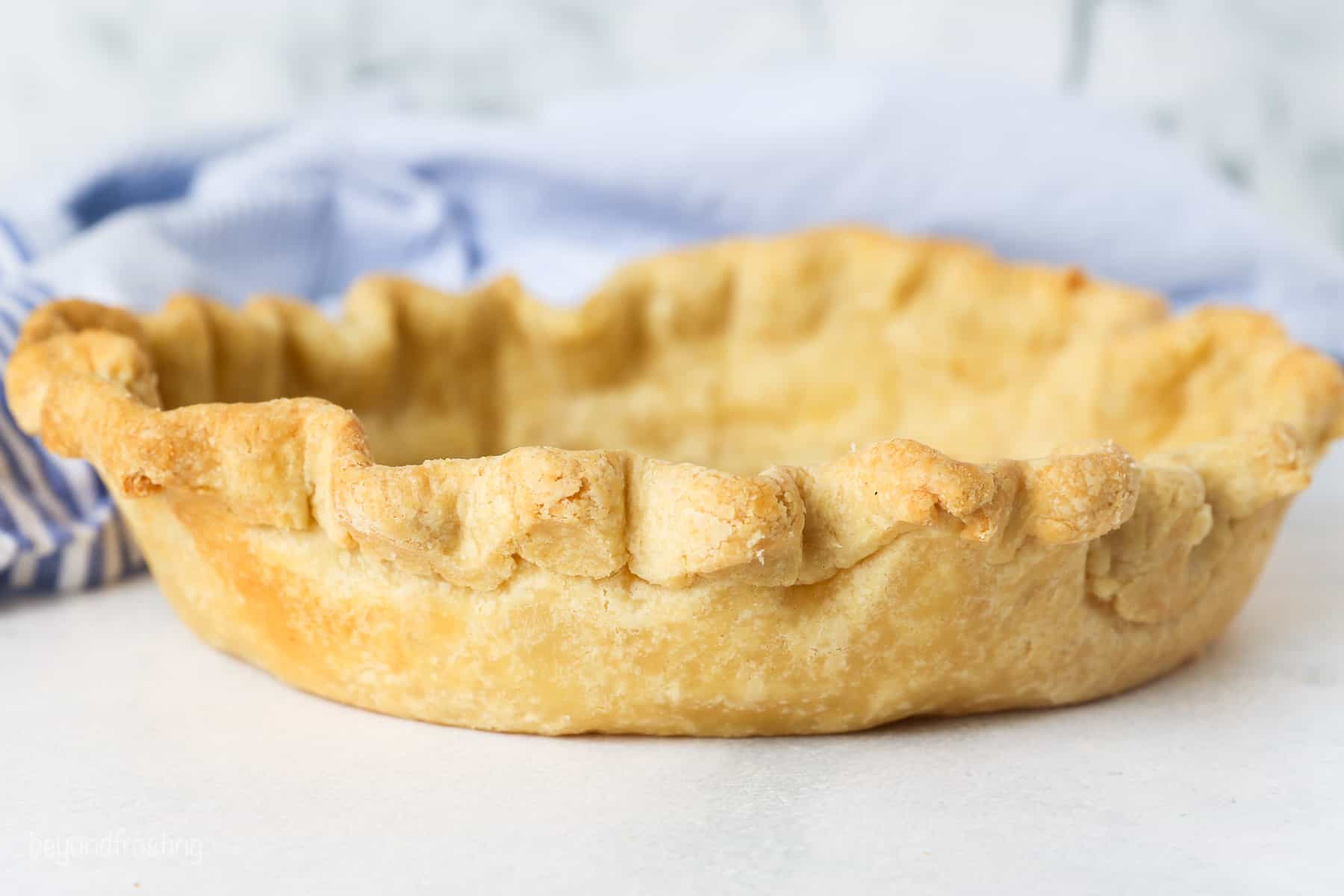
Frequently Asked Questions
Should I blind-bake a store-bought pie crust?
If you’re using refrigerated or frozen pie dough, you’ll still need to blind-bake the crust if a recipe calls for it. Keep in mind that store-bought pie crusts often use less dough, and may brown quicker as a result. Most packaged store-bought pie crusts come with par-baking instructions. I recommend following the package directions, as homemade pie dough bakes differently.
Can I add an egg wash?
I’d say only if the recipe calls for it. If you’re not sure, consider brushing only the edges of the crust with an egg wash after you’ve baked it with the pie weights, and before returning it to the oven.
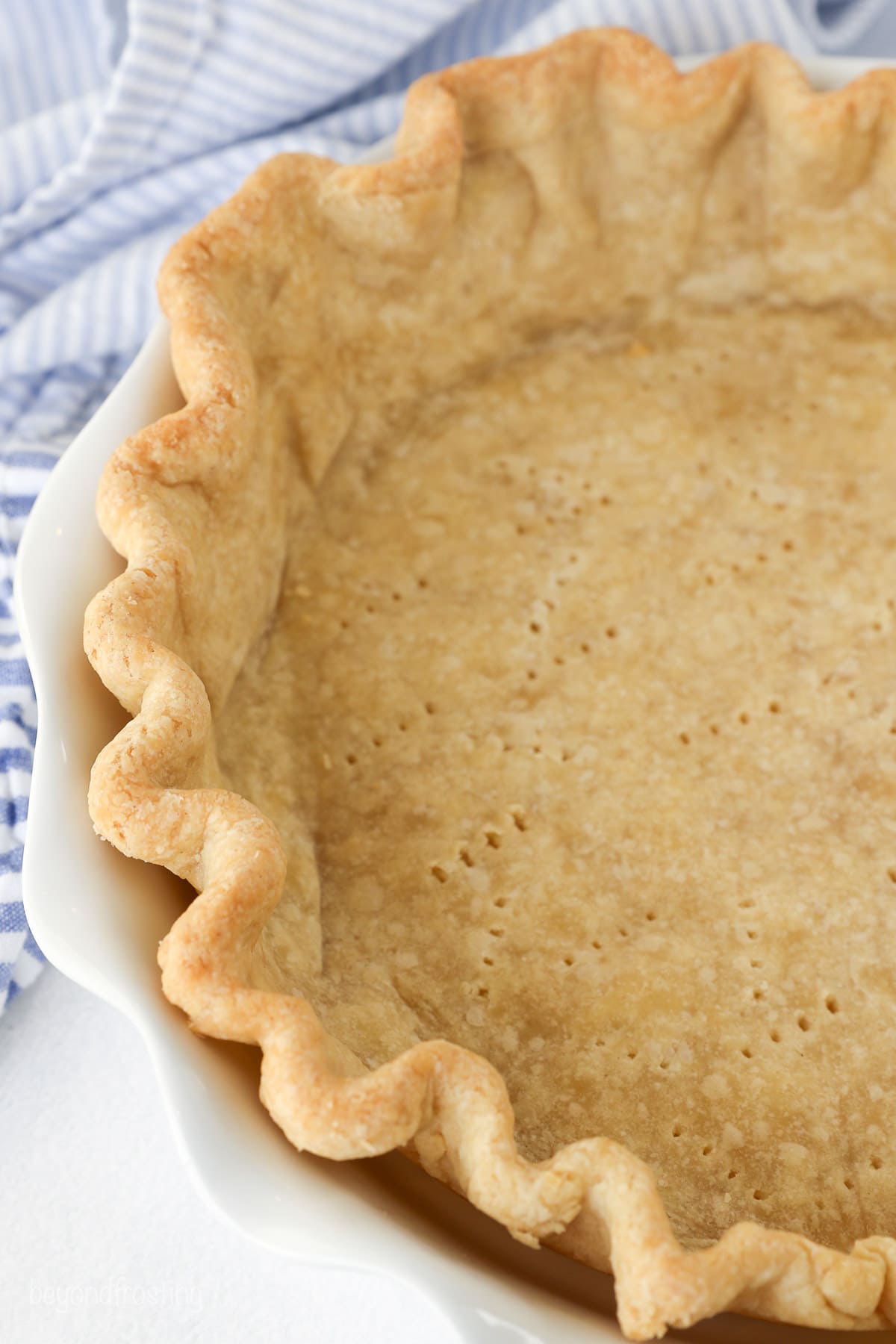
Applying a Top Crust to Blind Baked Bottom Crust
Most no-bake recipes don’t require a top crust. However, if you’d like to add a lattice crust or another type of top crust to your baked pie (as I do with my apple blueberry pie recipe), it’s doable! More often than not, you’ll add the top crust after par-baking the bottom crust, and crimp the edges together.
Make-Ahead and Storage
- Make-Ahead. Once your prepared pie dough is fitted into the pie plate, wrap it tightly and refrigerate the crust for up to 5 days.
- Freeze. Alternatively, you can freeze the unbaked pie shell for up to 3 months. Defrost the pie crust in the fridge for 1-2 hours before blind baking.
More Pie Recipes to Try
Print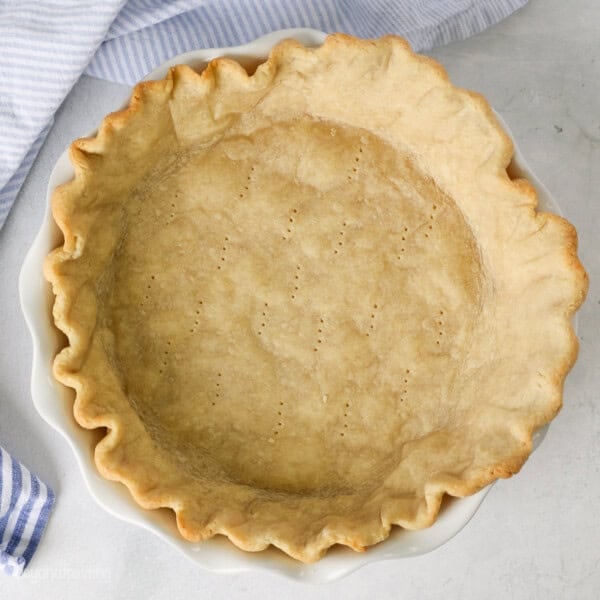
How to Blind Bake a Pie Crust
- Prep Time: 10 minutes
- Chilling Time: 30 minutes
- Cook Time: 30 minutes
- Total Time: 1 hour 10 minutes
- Yield: 1 pie crust
- Category: Pies
- Method: Oven
- Cuisine: American
Description
Learn how to blind bake a pie crust either partially (par-baking) or fully before adding a filling using this easy step-by-step guide.
Ingredients
- One 9-inch pie crust dough, prepared
- Pie weights
- 2–3 tablespoons all-purpose flour, for rolling out the dough
Instructions
- Prepare and chill a standard, 9-inch pie crust. Preheat the oven to 375°F.
- Roll out the pie dough on a lightly floured surface until it’s approximately 11 inches in diameter, leaving about 1 inch of overhang around the sides of the pie plate. Tuck the edges of the crust under itself and crimp. Chill the pie crust for about 30 minutes.
- Place a sheet or two of parchment paper over the chilled crust. Fill it about 3/4 of the way full with a combination of pie weights and/or dry rice or beans. Push the beans/pie weights to the edges of the pie plate. This helps hold up the edges of the crust.
- Bake the crust for about 15 minutes, or until the edges begin turning golden brown, then remove it from the oven and remove the pie weight.
- Use a toothpick or a fork to poke holes into the bottom of the crust. Place the crust back into the oven. For a partially baked crust, bake it for 7-10 minutes, or until the bottom begins to brown as well. For a fully baked crust, bake for another 15-20 minutes or until the bottom of the crust has browned.
Notes
- You can also use a gluten-free pie crust.
Nutrition
- Serving Size: 1 slice
- Calories: 196
- Sugar: 0.1 g
- Sodium: 156.3 mg
- Fat: 12.3 g
- Carbohydrates: 17.9 g
- Fiber: 0.6 g
- Protein: 3.3 g
- Cholesterol: 53.8 mg

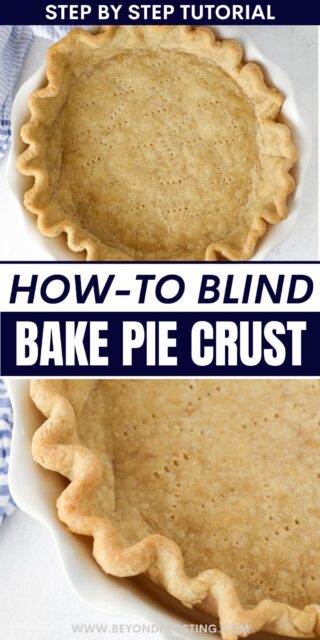
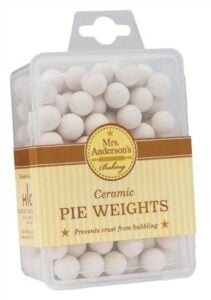
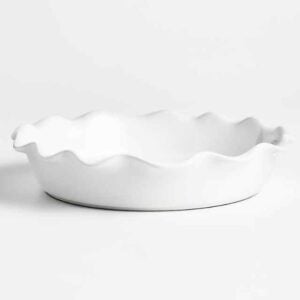

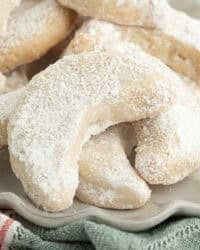


Does the oven temperature affect the shrinkage of the crust? My old Good Housekeeping Cookbook calls for a 450-degree oven, as opposed to 375-degrees. I just used your recipe, my first all butter, food processor crust, and it wasn’t all that. Flaky it was, but it shrunk, and the outside edge was hard, not soft. And, I LOVE your recipes! So, it’s me, but I’m not sure why… too much processor, not enough? I just wanted to break away from 60 years of my usual fork and bowl pie crust. Poo.
Your expert advice is absolutely spot on!!👏👏👏👏👏👏Thank you for sharing your knowledge! Finally a blind baked pie crust with no bubbles,slumping or sogginess!
And flakey!!! My husband might have to buy bigger pants! Lol!
Oh my gosh Cheryl, that is AMAZING! Thank you so much!